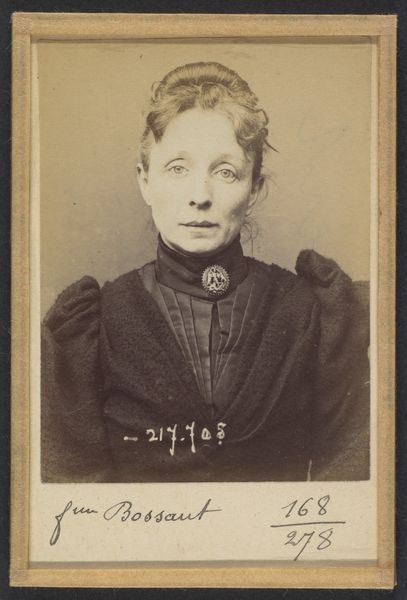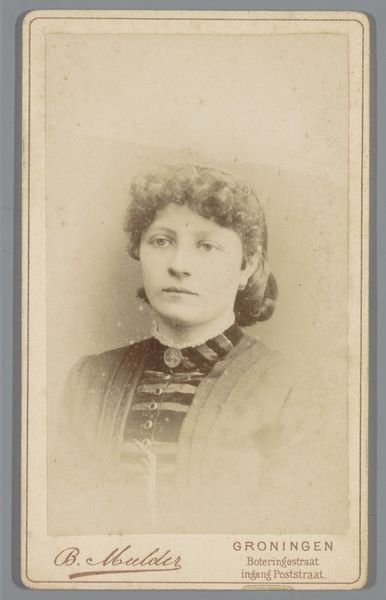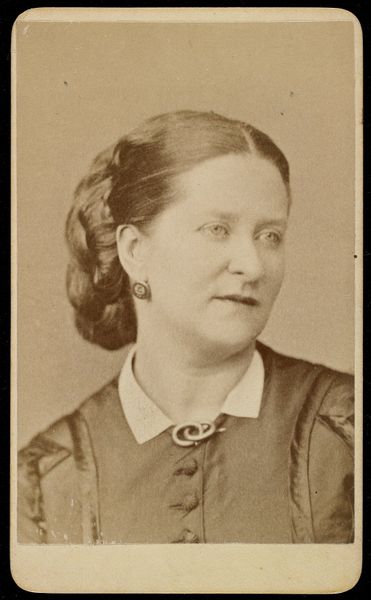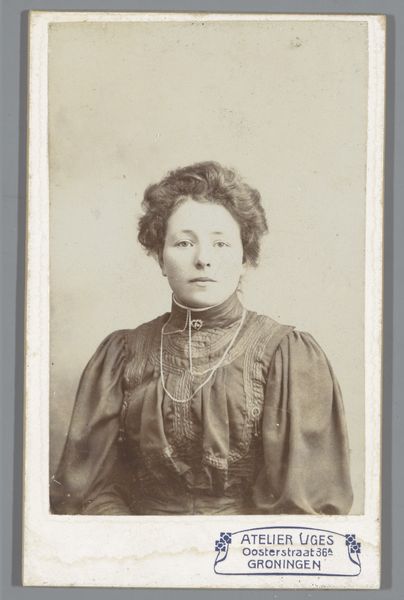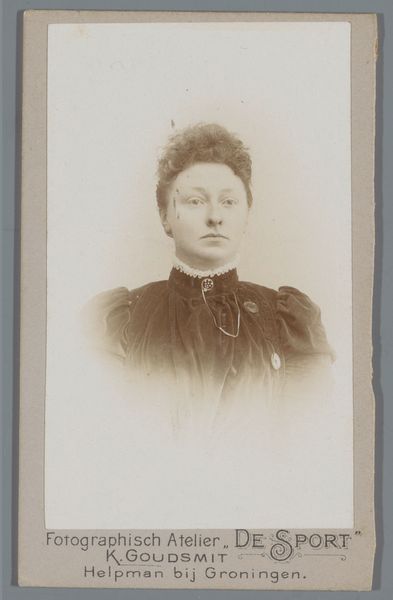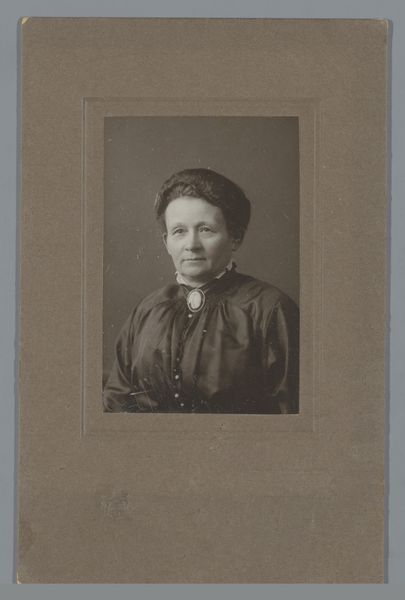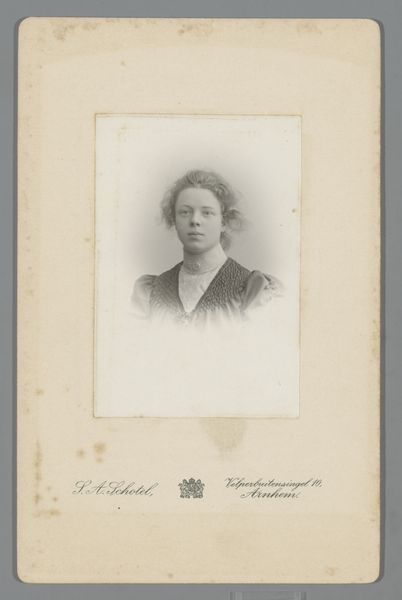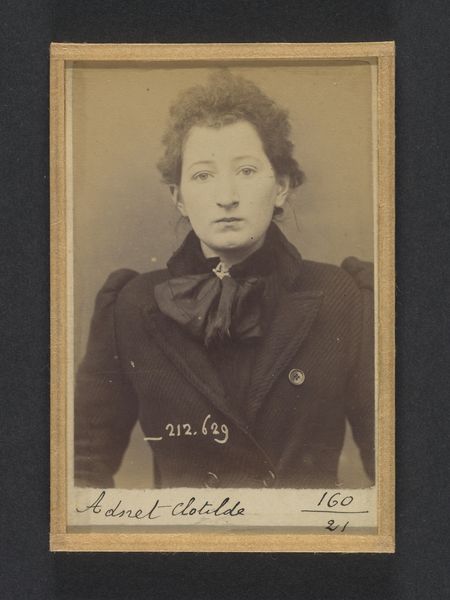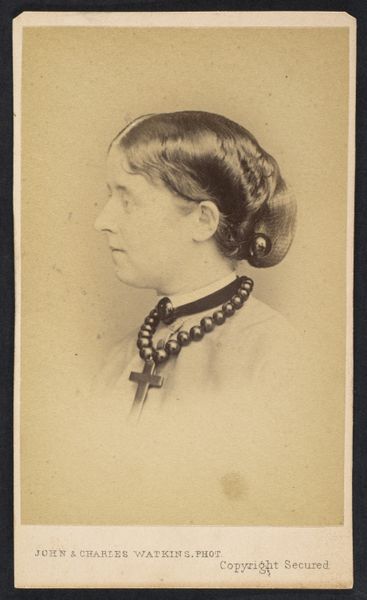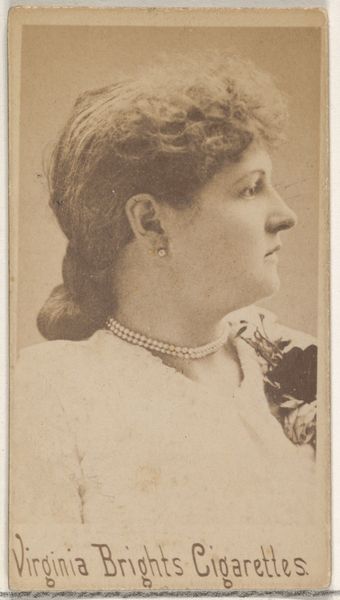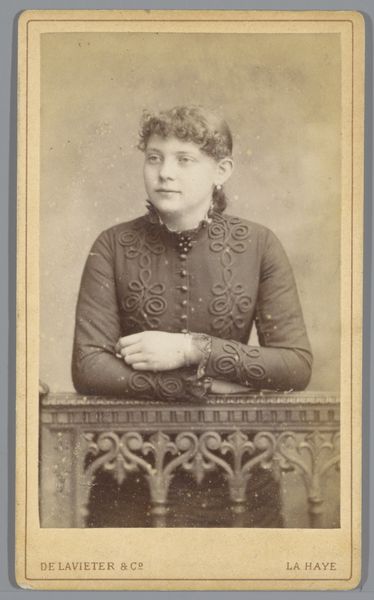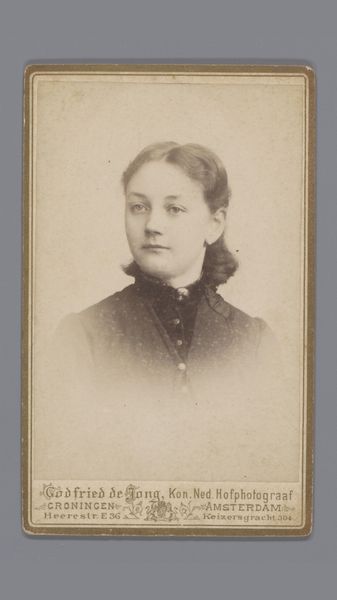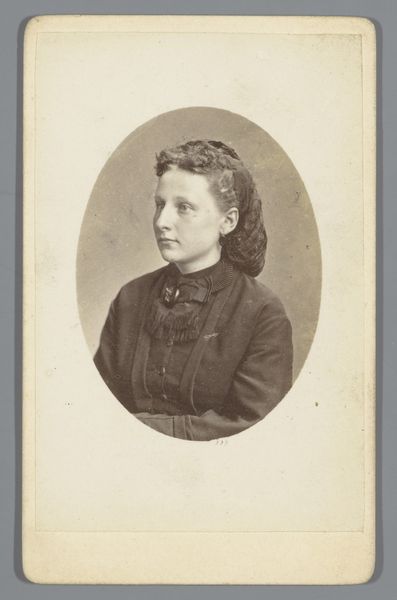
Schrader. Minna, Appoline. 19 ans, née à Paris XIe. Sculpteur. Association de malfaiteurs. 24/3/94. 1894
0:00
0:00
photography
#
portrait
#
portrait
#
photography
#
realism
Dimensions: 10.5 x 7 x 0.5 cm (4 1/8 x 2 3/4 x 3/16 in.) each
Copyright: Public Domain
Curator: This rather unsettling portrait is by Alphonse Bertillon, titled "Schrader. Minna, Appoline. 19 ans, née à Paris XIe. Sculpteur. Association de malfaiteurs. 24/3/94.". Editor: The stark lighting and the direct gaze—well, absence of gaze—creates a really unsettling effect. It feels dehumanizing, almost like a specimen. Curator: And that’s exactly what Bertillon was aiming for. He pioneered forensic photography, developing systems of classifying criminals through meticulous measurement and documentation. Note the stark photographic print and how it’s mounted on a card with identifying details scribbled on it. Editor: So the materiality here is crucial. It's not an artwork intended for display but as part of a bureaucratic machine. I am struck by her elaborate blouse—such intricate embroidery paired with this austere context. Did they really let her keep it for the photo? Curator: Probably not. This image represents an incredibly fraught moment in history, the rise of scientific racism and the use of photography to reinforce existing power structures. The institutional framework is really at play here: law enforcement using images to create, codify and solidify prejudices. It's fascinating how this "portrait" deviates so wildly from traditional portraiture, intended to capture likeness but not humanity. Editor: It’s disturbing to think of the production process – the labor that went into even making the blouse stands in stark contrast to how quickly her identity has been diminished here, reduced to these numbers scrawled beneath her image. And the title itself labels her as a criminal, associating her with this supposed association. All captured through photographic means. Curator: Absolutely. By focusing on how these images were utilized by institutions, we confront the ethical complexities inherent in photography. This portrait is now housed here at The Met. Placing it in this setting forces us to consider its cultural significance beyond its original purpose as a law-enforcement tool. Editor: Yes, by presenting this work as art, we ask: Who decides what has artistic merit, and what becomes historical evidence, particularly considering Bertillon's system and this photography are rooted in bias and problematic assumptions about class and criminality? This opens an uncomfortable dialogue about representation, agency, and the complex relationship between art, power, and social control. Curator: Exactly, by looking beyond the subject, to its cultural life, and technical process, we learn the very power dynamics at play. Editor: It's a good, though uncomfortable, reminder that art does not exist in a vacuum, either in production or context.
Comments
No comments
Be the first to comment and join the conversation on the ultimate creative platform.
